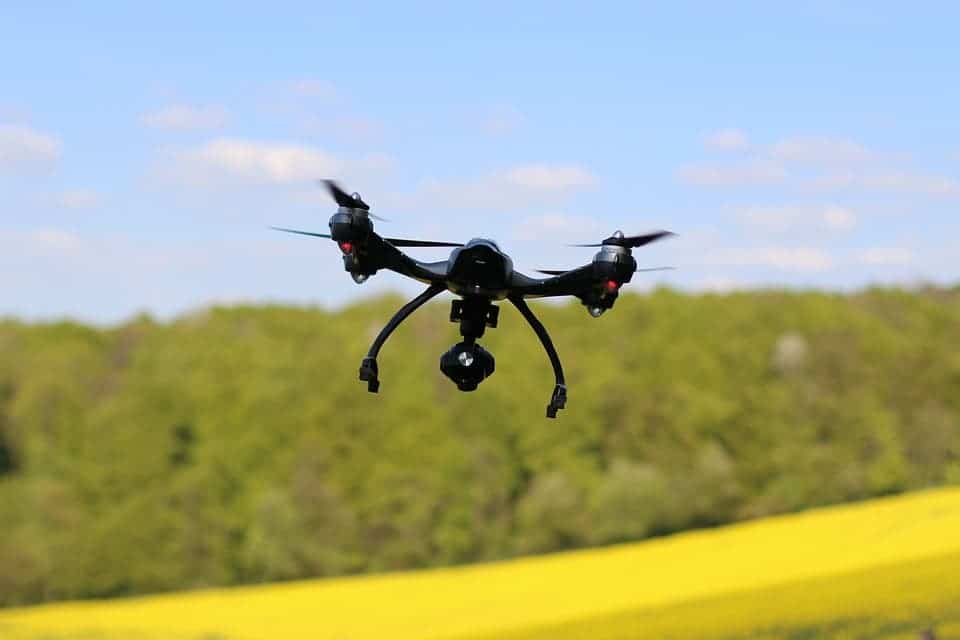As scientists ramp up their research in an effort to better understand climate change and how to mitigate damage caused by it, they’re increasingly employing the help of a certain high-flying technology. Unmanned Aerial Systems (AES), more commonly called drones, are helping us to gather the data needed to further scientific knowledge about how our environment is changing.
Scientists use a lot of different methods of collecting information, but more is always better and some data is difficult, or even impossible, to collect by hand. For these situations, researchers use drones to fill in the gaps.
Increased Access to Aerial Data Collection Methods
Drones have helped enable more researchers to collect the data they need for their studies due to their relative affordability and ease of use. They’re much less cost-prohibitive than other aerial methods of collection such as planes, helicopters, and satellites. You also need fewer people to operate a UAS that you would a plane. The cost of the technology is still decreasing too.
Unmanned aerial systems are also typically designed to be relatively easy to use. While there are some training and regulatory steps you need to take, you don’t need the same amount of training to pilot a drone as you do for a plane or helicopter. This user-friendliness allows more researchers to collect aerial data for their studies.
Increased Access to Hard-to-Reach Places
To capture the evidence needed to understand the shift in our climate, scientists often need to gather information in hard-to-reach and remote places. Everywhere from the Arctic to deep in the forest, to the tops of mountains, to the bottom of the ocean can provide insights into the climate.
Drones can reach those places without putting people’s wellbeing at risk due to their size, maneuverability and their ability to be unmanned. UAS designs are becoming increasingly advanced and able to reach even more remote places. Although drones are typically associated with aerial use, they can also travel into the depths of the ocean to collect information.
Using an unmanned system helps to reduce costs, increase efficiency and improve safety when exploring hard-to-reach locations.
Faster, More Versatile Data Collection
Researchers can also capture their data much faster by using drones than they could through other methods, saving them time, resources and allowing them to collect more knowledge to improve their research.
Drones can also capture multiple types of information at once. You can equip an AES with a high-definition camera, a multispectral sensor, a thermal sensor, a chemical sensor and many other types of gear. This can make the collection more efficient and more consistent and can help create a more accurate picture of a location by providing additional context for each type of evidence captured. As the equipment improves, even more capabilities are being added.
Real-Time Data Analysis
Not only can drones collect more intelligence, but they can also get it to analysts faster. In fact, the technology can enable real-time data analysis. In combination with regular monitoring, this could help scientists detect threats such as the presence of a chemical and warn the public immediately.
In regards to climate change, it can help scientists process their data faster, which is especially important as more and more information gets collected. UAS technology can also provide real-time monitoring of wildlife populations and even, through the use of AI, automatically identify poachers and different species of wildlife and alert the appropriate personnel.
Enhanced Data Visualization Capabilities
Drones can collect multiple types of information about one location, cover a fairly wide area and collect information over a long period. This knowledge can be combined to create comprehensive visual representations that provide a clear picture of the state of an ecosystem and how it’s changed over time. These maps can help scientists to better understand the big picture of climate change as well as some of the details.
When shared with the public, these visuals can be especially effective for helping people to understand the impacts of global warming. Maps, time lapses and imagery of remote locations can help illustrate what’s happening in an easily digestible, memorable way.
Data is crucial to furthering our understanding of our environment and the shifts it is undergoing, which is essential to figuring out how to respond to climate change and its impacts. Collecting this information, however, isn’t always easy. Drones can help facilitate the capture and analysis of those data, improving the accuracy and scope of the research we can conduct.
Was this helpful?




